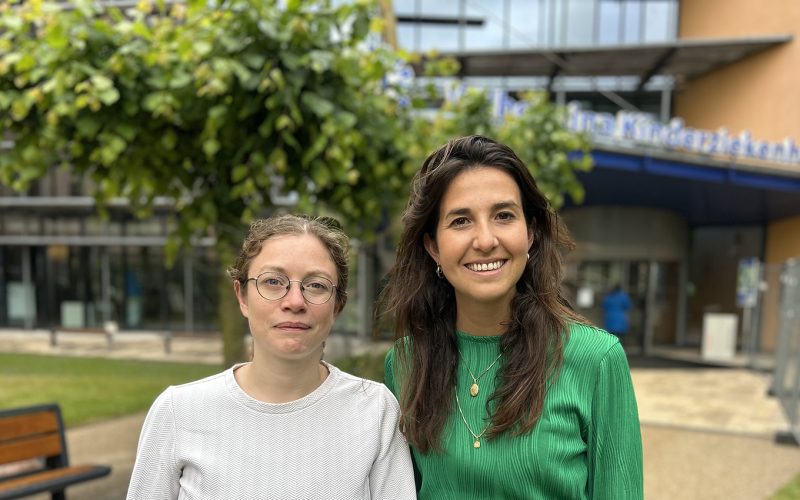Reliable scientific information about the impact of Respiratory syncytial virus (RSV) is essential for developing a national strategy to protect all children in their first year of life. Research was needed: How often do RSV infections occur in young children, and how severe are these infections? What impact did the recent coronavirus pandemic have on the circulation of RSV? These were questions that researcher Marie-Noëlle Billard set out to answer, while physician-researcher Sarah Hak mapped the burden of RSV infections outside the hospital. They both obtained their PhDs on 11 June in Utrecht.
RSV is a common, contagious virus that causes respiratory infections. Almost all children experience at least one RSV infection before the age of two. Although most infections are mild, the RSV can cause serious illness, especially in young children, the elderly and risk groups. In infants, it causes respiratory symptoms, such as coughing and shortness of breath. Sarah: ‘Our large-scale European study show that RSV is responsible for about one in three respiratory infections in young children who visit their GP in winter. These infections have substantial impact on children, their parents, and lead to high healthcare costs.’ Every year, 150 to 200 babies with RSV are admitted to intensive care in the Netherlands. The majority of babies admitted to hospital are younger than three months.
New preventive measures offer hope to protect all infants against RSV. Since 2023, two new immunisation strategies have been approved by the European Medicines Agency to protect infants against RSV: a vaccination for pregnant women and a single injection of RSV antibodies for the infant. These two methods can protect babies against RSV in their first year of life.
To support the decision on vaccination policy in the Netherlands, Marie-Noëlle and the team developed three scenarios. These scenarios help us understand which immunisation strategy would be the most effective. Marie-Noëlle: “Of the three vaccination strategies, administering monoclonal antibodies in winter prevented the largest number of cases. This involves giving babies the antibodies via an injection just before winter, or immediately after birth if they are born in winter. The protection is immediate and lasts as long as the antibodies remain in the body.” These research results contributed to the recommendation in 2024 to include RSV vaccination in the National Immunisation Programme (Het Rijksvaccinatieprogramma).
Sarah investigated the impact of RSV in primary care, and how general practitioners view RSV and what their role could be in future vaccination strategies. Sarah: ‘GPs are generally positive about vaccinating young children. However, greater awareness and reliable information, both for healthcare professionals and the general public, are crucial.’ Ultimately, whether RSV vaccination will actually make a difference depends on whether parents want to have themselves and their children vaccinated. Sarah argues that growing vaccine hesitancy and the spread of online misinformation call for new forms of communication. In the discussion section of her thesis, she explores the use of AI chatbots—such as the RSV Chatbot developed by this team—to provide people with reliable information in an accessible way. Sarah: ‘If such digital tools are used ethically and evaluated scientifically, they could play an important role in communicating about vaccinations in the future.’
Marie-Noëlle’s research shows that unexpected events like the coronavirus pandemic can alter the circulation of RSV. During the coronavirus pandemic, RSV temporarily disappeared in 2020 but made an unexpected come back in the summer of 2021. This disruption of RSV seasonal pattern was caused by public health measures like social distancing, in particular with school closures. Since then, RSV has gradually returned to its old pattern. Vaccination programmes must therefore be robust and adaptable to changes in the local context to remain effective in the long-term.
